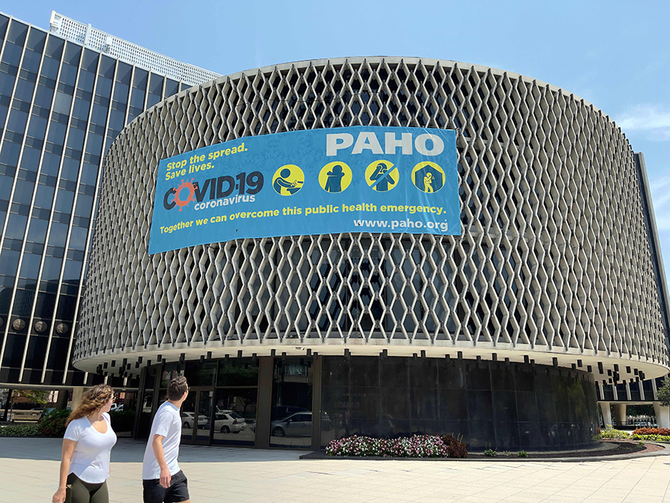Infectious diseases have garnered much attention lately as a result of the coronavirus disease (COVID-19). While the pandemic lingers on, another sinister set of noncommunicable diseases is rampant in epidemic proportions, making populations more susceptible to complications and death from the virus.
Research reveals that people living with cardiovascular disease, diabetes, cancer, chronic kidney disease and respiratory ailments are at higher risk of severe complications from COVID-19. At the same time, healthcare systems across the globe have been overwhelmed caring for coronavirus patients, which has significantly impeded diagnostic, treatment, rehabilitation and palliative care services for people with or at risk of chronic disease.
Moreover, the pandemic has exacerbated poor living conditions for low socioeconomic populations, who already have a disproportionate risk of developing chronic diseases due to their education, nature of employment, low income, poor access to healthcare and limited access to nutritious food.
The World Health Organization estimates that about a quarter of the global population lives with a chronic disease, with 41 million deaths recorded annually, equivalent to 71 percent of all deaths. In the eastern Mediterranean region, chronic diseases are considered the leading cause of death, claiming the lives of 2.6 million people in 2016. This figure is estimated to rise to 3.8 million by 2030, mainly driven by cancers, chronic respiratory diseases, diabetes and cardiovascular illnesses.
It is evident why chronic disease prevention and management should be a priority for public health officials. Healthier populations are the foundation for robust economies, flourishing communities and happier individuals. Otherwise, populations would despair over the costly social and economic losses in quality of life, productivity and healthcare financing. It is estimated, for example, that the US economy loses $3.8 trillion in annual healthcare costs due to chronic disease.
A holistic and comprehensive approach to prevention and control of chronic diseases will demand a coordinated approach from relevant sectors, such as healthcare, agriculture, economy, education, urban planning, transport and community affairs.
It is important that governments invest in chronic disease surveillance systems to collect, analyze, and interpret timely, sophisticated data on serious illnesses. A typical population survey would include important datasets, such as age group, gender, geographical location, year of diagnosis, root causes of diseases and health-related risky behaviors.
Public health officials also survey social and environmental determinants of health, such as income, cost of food items, prevalence of fast food restaurants, access to healthy foods, tobacco use, and quality of air. Another important factor is the level of access to preventative medical services, such as early screening, consultations, follow-ups and treatments. For example, the Centers for Disease Control and Prevention in the US and the Canadian Chronic Disease Surveillance System conduct targeted surveys to understand chronic diseases among populations and design effective policies accordingly.
Traditional healthcare systems have always focused on providing treatments rather than preventing disease. Shifting resources toward preventative programs, such as public health education programs, will lead to lesser emergence of chronic diseases and better ways of managing symptoms. Awareness programs should target all age groups in common gathering places such as schools, universities, workplaces, hospitals, clinics, relevant public spaces and social media. Numerous policies to curb access to unhealthy foods and tobacco can be achieved through pricing policies or taxes, while nudging healthier alternatives through farmers’ markets, nutrition labeling on products and healthy cooking ideas.
Self-management education programs are also essential to promote personal responsibility in preventing and managing chronic diseases. For example, the CDC Chronic Disease Self-Management Program has been designed by Stanford University, covering a variety of important topics, such as effective techniques to deal with pain or fatigue, exercises for improving strength, appropriate use of medications, evaluating new treatments, managing depression and stress, relaxation techniques and healthy eating habits.
Singapore’s HealthHub is an online portal and mobile app with wide-ranging health content on food and nutrition, exercises for preventing chronic diseases, managing chronic diseases, health screening, and information on treatments and medications.
More cities are reimagining their urban plans to promote healthier populations. Examples include cycling cities, such as Copenhagen and Amsterdam, that have designed cycling routes to prompt people to cycle between their homes, office spaces, cultural spaces, parks, and other key locations. The creation of expansive green spaces also allow for all sorts of physical activities, such as walking, strength training and martial arts. Governments have also been concerned with reducing air pollution, now considered a risk factor in causing premature deaths and chronic diseases. The US Clean Air Act is a prime example of a legislation that has successfully regulated emissions of hazardous air pollutants.
Lastly, expanding access to life-saving and innovative screening, diagnostics, treatments, medications, and palliative care for people with chronic disease is pivotal in reducing mortality rates. Universal health coverage and easily accessible healthcare facilities covering different geographical locations should also be provided. Skilled healthcare workers, from physicians and nurses, must be trained and able to deliver high-quality care to patients suffering from chronic diseases. Substantial investments also must be channeled into research and development in this area in order to reduce mortality rates and symptoms.
Healthcare systems in the region are urged to make transformative shifts in their resources to focus on proactive, preventative interventions, while also upgrading their facilities to provide quality care for people with chronic diseases.
Sumber: SARA AL-MULLA, https://arab.news/47ssy


Recent Comments